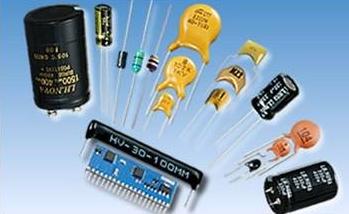
On May 16th, the 6th General Assembly of the China Electronic Materials Industry Association Congress and Industry Development Report 2014 was held in Beijing. Mr. Qiaoyueshan, Director of the Electronic Infrastructure Division of the Electronic Information Department of the Ministry of Industry and Information Technology, attended the meeting and spoke on the leadership of the Operation Monitoring Coordination Bureau and the Personnel Education Department.
In his speech, Qiao Yueshan said that the development of China's electronic materials industry is mixed. Although domestic electronic materials are increasingly used in the field of flat panel displays and lithium-ion batteries, and occupy the market in the low-end areas, they still rely on imports in the high-end materials field. Moreover, factors such as the expansion of the "Information Technology Product Agreement" will have an impact on China's electronic materials industry. Although there are many market opportunities facing the electronic materials industry in China, the period of protection by the national policies is getting less and less, and its development path is doomed to be full of ups and downs. He also stated that electronic materials are the basis for the development of the electronic information industry, and its importance is undoubted. The Ministry of Industry and Information Technology will continue to support the further development of the electronic materials industry in the future.
Yuan Tong, Deputy Secretary-General of China Electronic Materials Industry Association, said in an association work report that in recent years, China’s electronic materials industry has seized the country’s policies and market opportunities to vigorously develop strategic emerging industries, accelerating product structure adjustment and technological innovation. Not only does the industry maintain continuous growth, but its sales revenue in 2013 reached a scale of RMB 250 billion; in addition, the level of technology in the industry continues to increase, and the energy consumption and material consumption of polysilicon production are reduced by more than 50% compared to 2010, and the optical fiber preform outer casing (PCVD+RIC) The technology has been successfully mass-produced. The 8-inch zone melting single crystal silicon growth technology has made breakthroughs. Ultra-thin dielectric ceramics have entered the pilot stage. Targets such as copper targets and germanium targets for ICs have occupied 90% of the domestic market share. Flat panel display panels are used domestically. Glass substrate, mixed liquid crystal, etching liquid, peeling liquid and other materials supporting capabilities have been significantly improved, and the output of high-performance copper clad laminates has maintained an average annual growth of more than 20%.
The sixth member congress of China Electronic Materials Industry Association held a general election and elected the sixth council member. The next meeting of the sixth board of directors was held to elect the chairman, deputy director and secretary of the new association. The chairman of the board was chaired by Pan Lin, director of the 46th branch of the China Electronics Corporation, and vice chairman of the board of directors. Zhou Qigang, chairman of the company, served as 11 and the Secretary-General was held by He Yaohong. The member congress also commended outstanding members such as Tianjin Zhonghuan Semiconductor Co., Ltd. and awarded medals.
In the industry development report conference held in the afternoon in 2014, Director of the IC Division of the Electronic Information Department of the Ministry of Industry and Information Technology Ren Aiguang, Science and Technology Division Yu Xiangxiang, Department of Customs of the Ministry of Finance Yang Chenfei, Director of Patent Management Department of the State Intellectual Property Office Ma Weiye, Academician of the Chinese Academy of Engineering Tu Hailing, The National Electronic Function and Auxiliary Materials Quality Supervision and Inspection Center, Professor Yan Ruyue, made a special report.
Ren Aiguang said that since China’s LED industry exceeded 100 billion yuan in 2009, the government’s support for the LED industry has also shifted from breakthroughs in individual technologies to breakthroughs in the entire industrial chain including equipment and materials, and is exploring new models to encourage The device companies took the lead in accelerating the R&D and application of domestic LED equipment materials. He also hoped that the electronic material companies could accelerate innovation and help the downstream LED companies break through the difficulties of intellectual property rights by changing the performance of materials.
Yang Chenfei said that in order to encourage the transformation and upgrading of enterprises and support the development of electronic information industry, the Customs Department of the Ministry of Finance fully exploits the characteristics of targeted, flexible and versatile tariff policies, and timely adjustment of electronic materials products in accordance with changes in the domestic market and the supply and demand conditions of upstream and downstream industries. tariff. Tariff policy will expand the international space for the development of the industry. He hopes that the company will always pay attention to the latest tariff changes, make good use of import and export policies, and stand at the height of the industry, taking into account the country's financial resources and import and export policy orientation, and promptly propose the adjustment of tariff policies.
Tu Hailing said that strategic emerging industries cannot be separated from new materials, and that new materials are also strategic emerging industries. Most electronic materials are new materials. He said that according to a survey conducted by the Ministry of Industry and Information Technology on more than 30 electronic information companies, only 14% of the 132 materials required by these companies were completely self-sufficient, and 32% were completely blank. The world today is on the eve of the new technology revolution, and the integration of the three technologies of life, information, and materials will lead to major changes. This is a very good opportunity for the electronic materials industry.
Remote Vibration Collar,Rechargeable Dog Training Collar,Remote Dog Training Collars,Long Range Dog Training Collar
Elite-tek Electronics Ltd , https://www.aetertek.ca